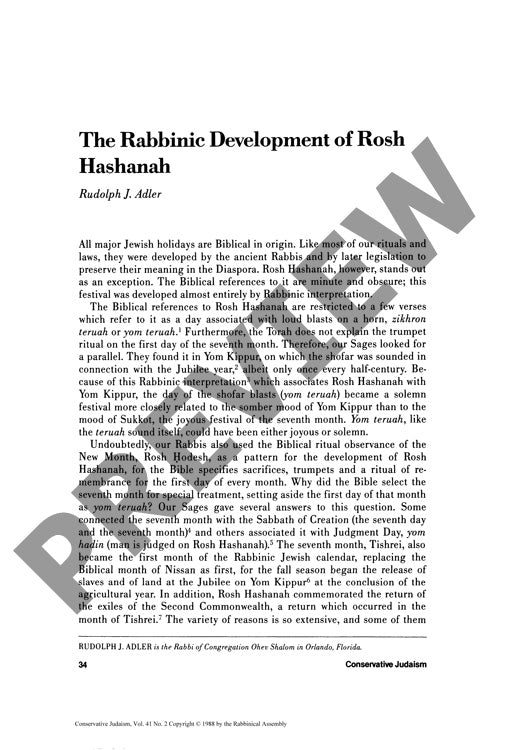The Rabbinic Development of Rosh Hashana
Couldn't load pickup availability
The transformation of Rosh Hashanah from a simple biblical day of horn-blowing into Judaism's solemn New Year stands as one of the most striking examples of rabbinic innovation in Jewish religious history. Unlike Passover or Sukkot, which emerge fully formed from biblical texts, Rosh Hashanah's evolution required extensive theological and liturgical development by rabbinic authorities working from minimal scriptural foundations. Through analysis of Talmudic sources, Mishnaic literature, and liturgical texts, this research traces how the Sages systematically constructed a comprehensive Day of Judgment from the sparse biblical references to Yom Teruah. The methodology employs comparative examination of biblical texts, rabbinic commentaries, and prayer book formulations to reveal how rabbis strategically developed the festival's theological framework by drawing parallels with Yom Kippur, establishing Tishrei as the Jewish New Year, and creating the distinctive three-part Musaf service (Malkhuyot, Zikhronot, and Shofrot). Particularly significant was the placement of rabbinic innovations, especially the Malkhuyot section emphasizing divine kingship, in prominent liturgical positions to establish legitimacy. This extensive development emerged as a necessary response to the destruction of the Temple and the need to preserve Jewish religious practice in the diaspora, resulting in a festival that showcases rabbinic creativity and theological innovation rather than direct biblical precedent.

More Information
-
Physical Description
-
Publication Information
Published 1988-1989
ISBN
-
Publication Credits
Rudolph Adler

